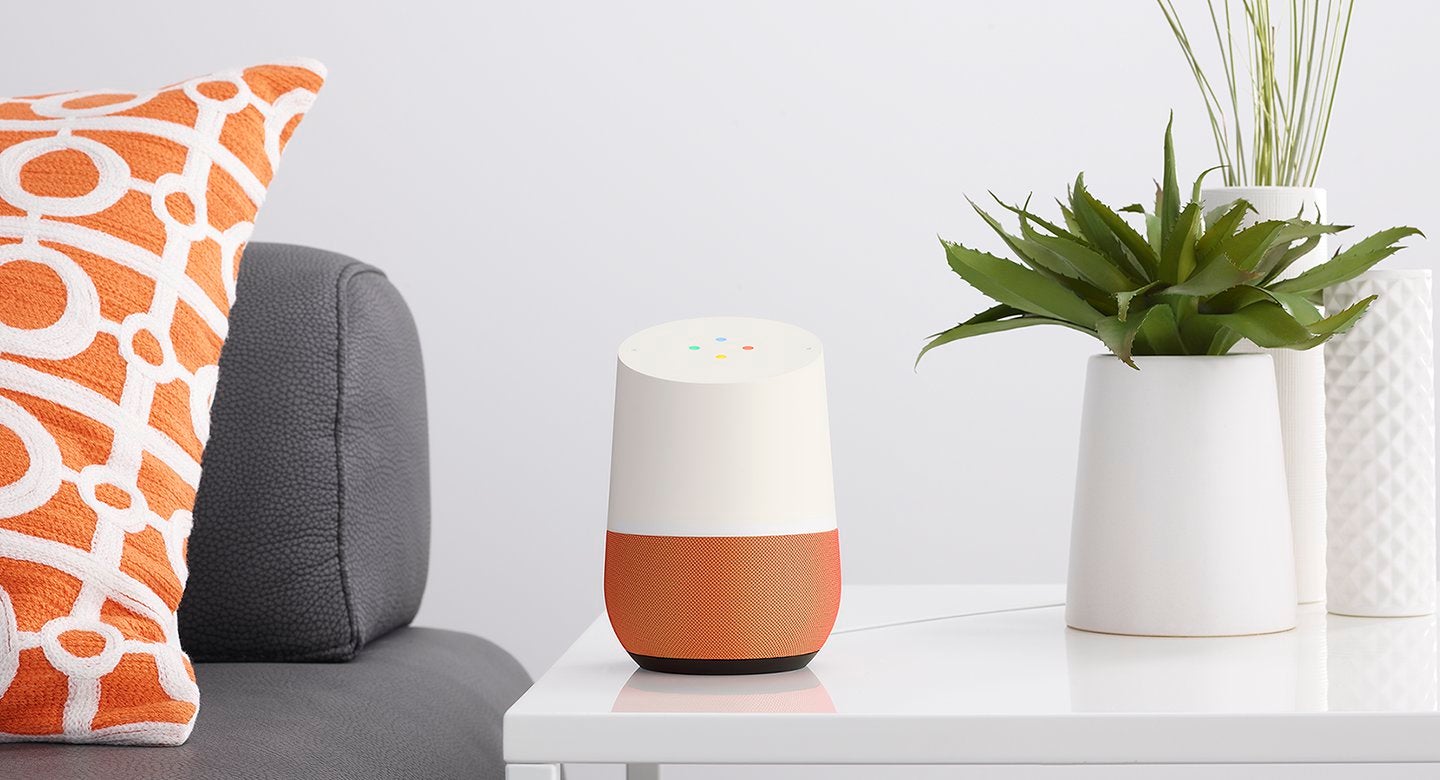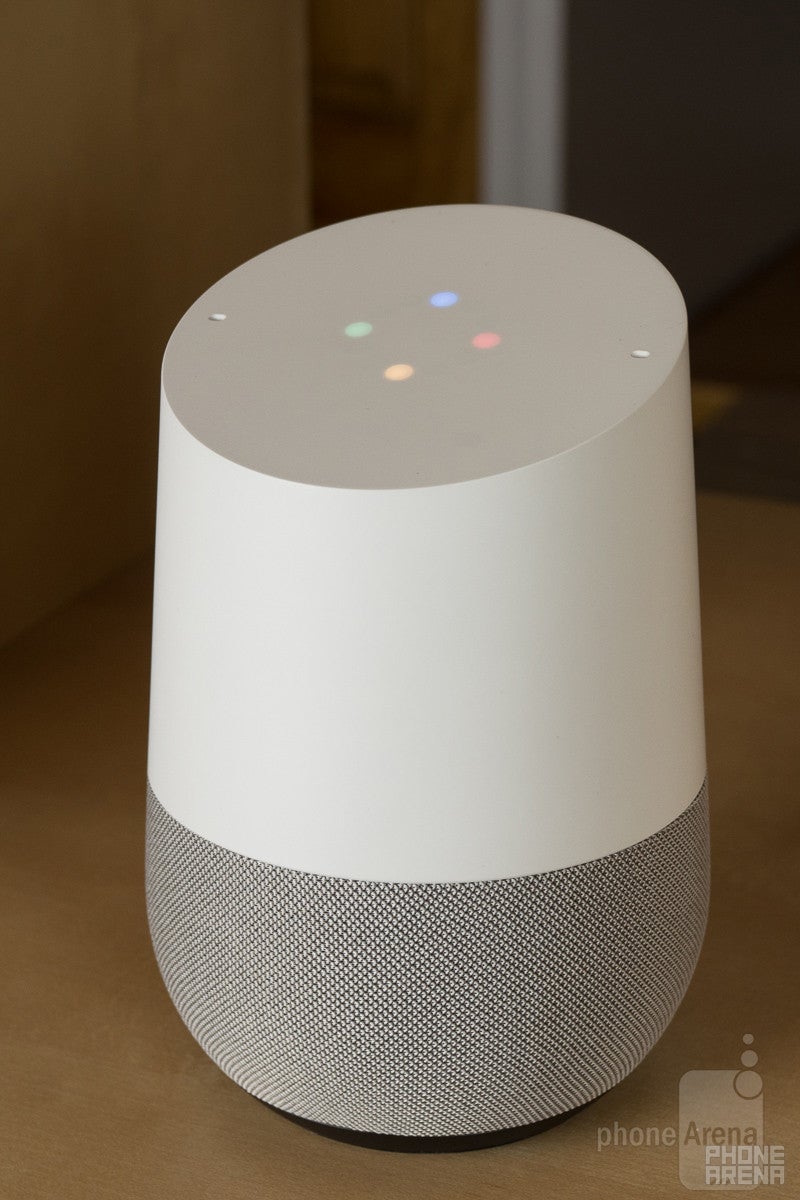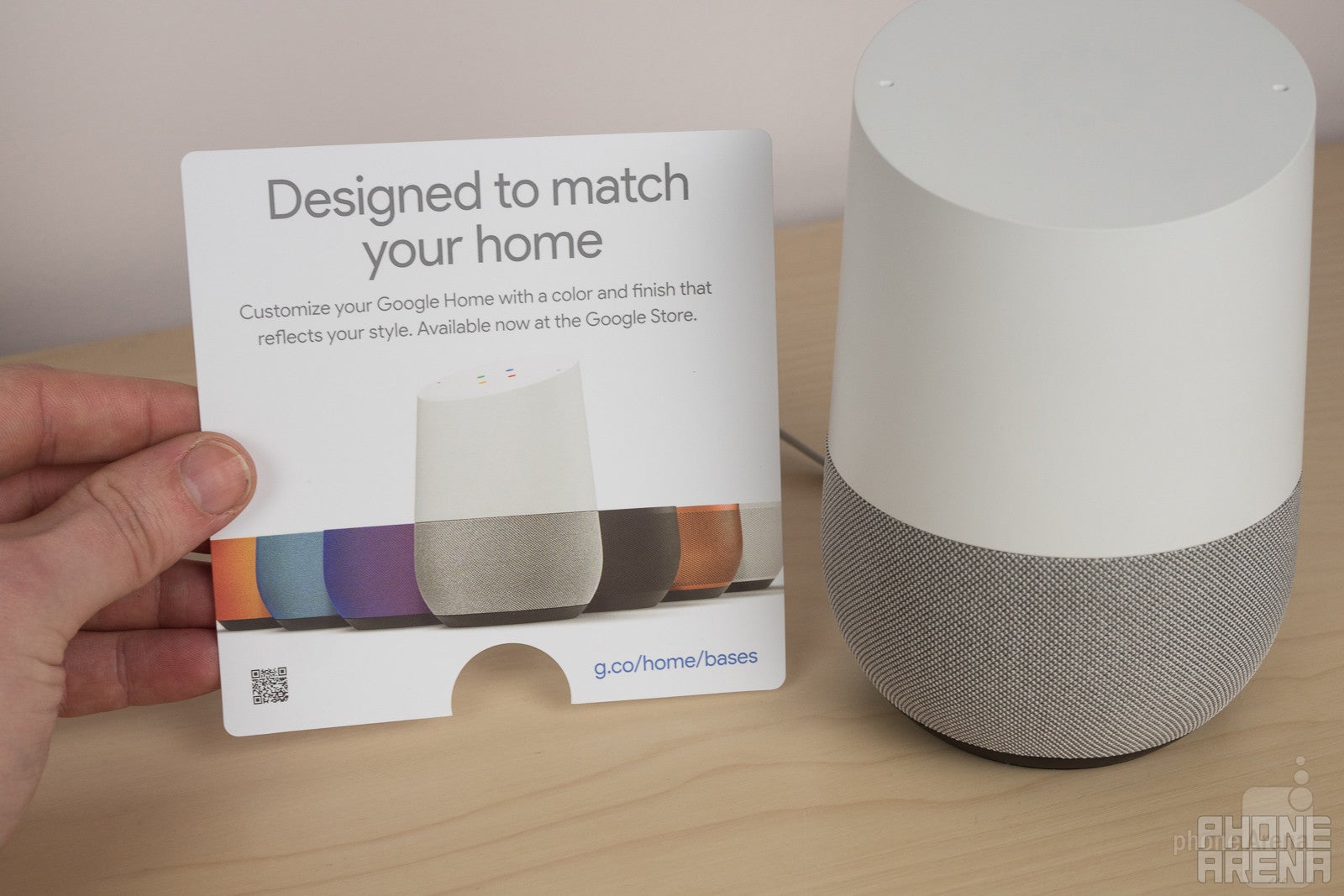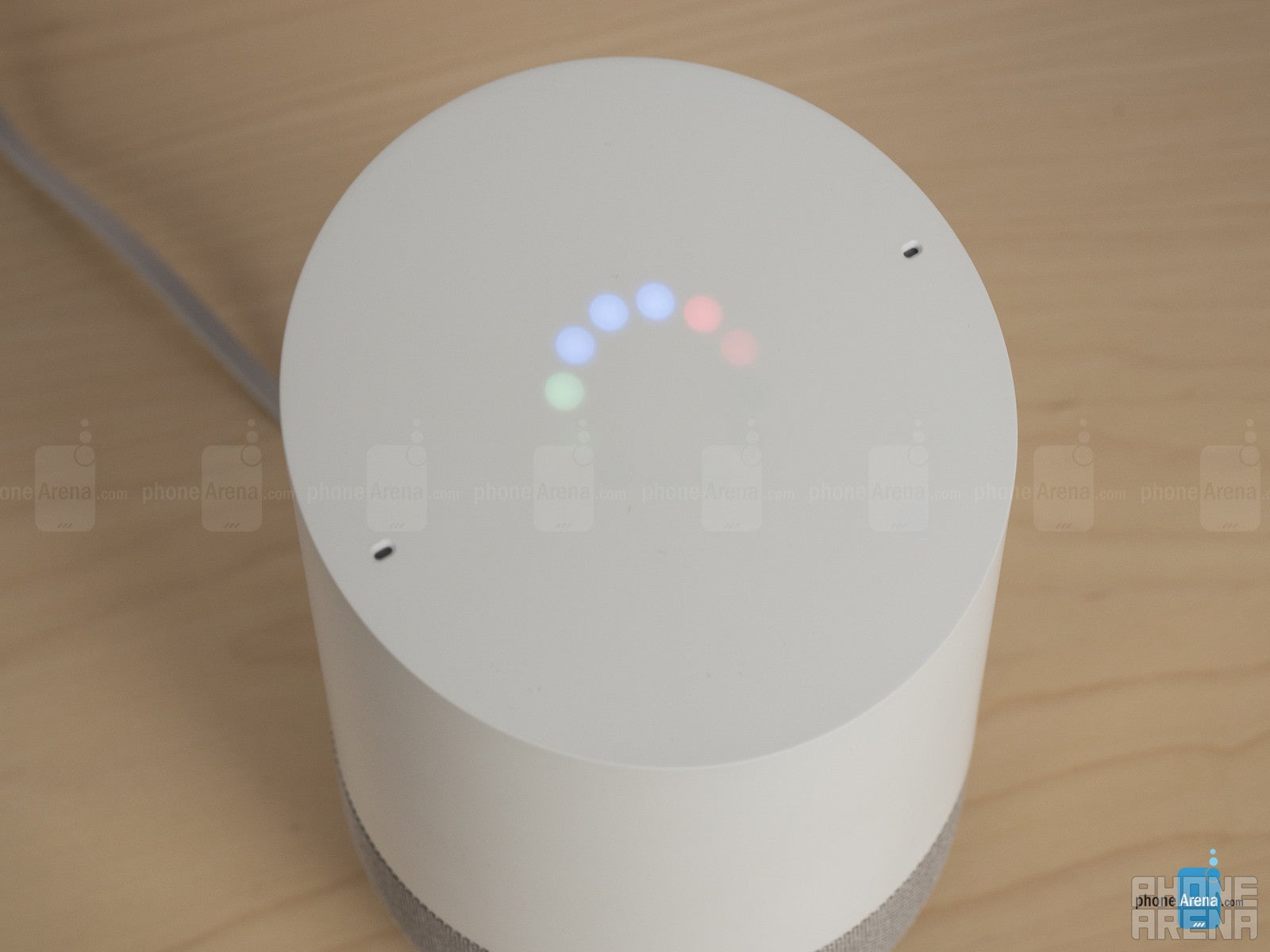Google Home Review

Introduction
With technology evolving as quickly as it does, it can be so difficult to predict which new trends will really catch on, and which are destined to fizzle out. Smartphones had already introduced us to the power of voice-controlled digital assistants, through services like Siri, Google Now, and Cortana, and you'd be forgiven for thinking that this tech would remain a mobile-focused development.

Is Google Home more than just an Android smartphone hooked up to a speaker? Can its capabilities really bring something new and worthwhile to your home? Let's a take a look at just what this smart speaker can do.
The package contains:
- Google Home
- Power adapter
- Quick-start cards
Design
Clean, functional, and beautiful, Google Home looks as good as it works

If you're already familiar with the original Amazon Echo, the first thing that's likely to strike you about Google Home is its comparatively compact size. The Home hardware forms a bit of a tapered cylinder, with its speakers at the bottom protected by an attractive cloth grille, while the top half of the cylinder appears quite featureless, terminating with a slightly sloped surface. But plug Google Home in and that blank expanse quickly springs to life, as the sloped top becomes illuminated by a ring of multi-colored LEDs embedded within.
The top surface doesn't just dance with light to animate your interactions with Home's voice assistant, and also conceals a capacitive touchpad. Tapping that interface can quickly pause music playback, and tracing a circle acts like volume knob (with helpful LED feedback) – it's all quite intuitive. On the back you'll find a mute button for when you don't want Home listening in on your conversations.
The speaker grille itself pops off quite easily, held on only by magnets, revealing the speaker array that pumps out both music and Google Home's spoken responses to your commands and questions. There's a hidden micro USB port in there for you hacker types, but most users will just be interested in the alternative grille colors. Both metal and extra fabric options are available, priced between $20 and $40.
The only physical connection to the outside world is the flat power cord. As a result, Google Home looks like the sort of modern, minimalist appliance that will fit in easily with a variety of home decors.
Connectivity
Google Home integrates quickly with your Wi-Fi network, though setup could be smoother
Plugging in Google Home will give you a voice prompt to install the Google Home app on your phone – and that's when the real setup process begins. The device connects to your home network over 802.11b/g/n/ac Wi-Fi, supporting both 2.4GHz and 5GHz bands. Enterprising tinkerers have discovered they can coerce Google Home to use hard-wired Ethernet with the help of the new Chromecast's adapter, but most of us are going to set this up over Wi-Fi.

While you'll get some limited degree of control over Google Home through its companion app, that's mostly used for setup, and you'll mainly be speaking aloud to the device. The good news there is that the unit's dual microphones are really great at long-range operation. We had no trouble calling out to Google Home from a couple rooms away (and down a flight of stairs), with our voice commands received and processed without issue.
Interface and Functionality
Google Assistant shows it doesn't really need a screen to shine
Like the Pixel phones, Google Home isn't running the old Google Now for its voice commands, and instead taps into the upgraded Google Assistant. While that does share a whole lot in common with Now, it also opens the doors for more advanced contextual voice input. That means that instead of spelling out all your queries in detail-complete sentences, you can also make reference to other recent commands. For instance, you might ask Google Home what the weather's going to be on Thursday, and can follow that up with, “and what about the day after?”, rather than spelling out, “what's the weather forecast for Friday?”
That also means that Google Home can plug into your calendar, emails, location detail, and more – of course, you're asked your permission prior to it getting access to all that personal information, but just how useful Google Home ultimately can be is directly proportional to how much you're willing to share with it.
Beyond your own personal info, that also includes connecting Google Home to various media and information sources. You can set up which publishers you want to get your news from, and which premium music services you'd like to tap into for entertainment.
If you're picking up multiple Google Home units, you can network them together around your home (and giving each unique identifiers to help tell them apart). And if you've already begun wiring your house for the smart-home future, you can control lights and appliances with your voice.
There's a ton of potential here, but there are also some big limitations. Take the integration with Google Play Music, for instance. After all, this is a speaker, and it's understandable that users are going to want to listen to a lot of music on it.
If you've got a premium Play Music account, you're all set, but unpaid users only get access to basic radio streams. You know the type: music in the same genre of the band you request, but with no ability to call up specific tracks or limit it to certain artists. “But wait,” you say, “I may not pay for Play Music, but I have a ton of albums I've already purchased or uploaded in my library. Can't I listen to those through Google Home?”
Well, kind of, but it's enormously frustrating. You may have every Drake album and mixtape in your library, but ask Google Home to play one and it will instead pull up one of those radio mixes. The only way to play music from your personal library is to create (and name) custom playlists for all your albums. Yup: Google Home refuses to play library music by artist, album, or track, but has no problem letting you specify a playlist. Weird.
Conclusion

Google Home has a ton going for it. As a speaker, it's nice and loud, and not only can its music easily stretch across rooms, but its capable microphones support voice input even when it's far out of reach. The power of the Google Assistant also gives it some impressive voice-driven tools, and using it really can feel like you have your personal assistant on-call in your office.
Still, there are some important limitations. The idea of fluid, conversational-tone interactions is still in its infancy, and much like playing an old text-based computer game, getting the most out of Google Home can sometimes require its users to remember specific voice commands. That's something that can easily improve, though, and there's already an impressive level of support: Home knows that “crank it” means “turn the volume up.”
If you've got a connected home, with smart lights and Chromecasts on every TV, you're in a good place to get a lot of use out of Google Home. And even if you don't, a smart-home hub like this can be just the impetus you need to get started with some upgrades.
The price is also right, with Google Home selling for just about $130, or $50 less than the Amazon Echo. Then again, the Echo Dot is a much more affordable option than either. Really, the only thing that could make Home better in the hardware department were if it had an HDMI port so it could double as a Chromecast itself – but we're still very happy with the functionality that is present.
Google Home and the Google Assistant make for a great pair, and if you're already a big fan of voice assistants on your phone, using Home will feel like second nature. If you're fine with the mobile nature of that interaction, you'd be fine to stick with just using Google's services on your handset. But give Home a try, and see how it's an easy way to make your home feel a lot more connected, and you may be wondering what you ever did without it.










Things that are NOT allowed: